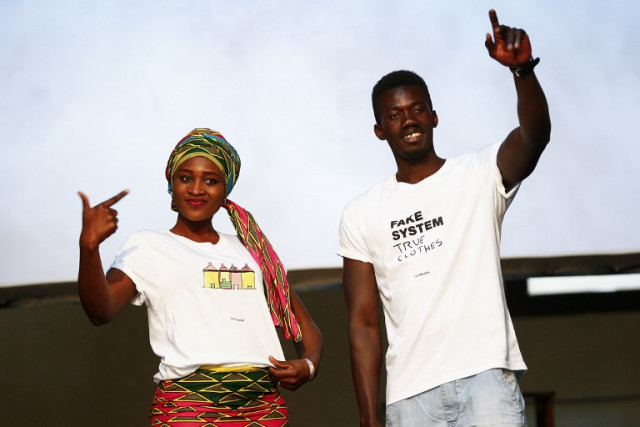
FASHION
Barcelona’s Senegalese street vendors present own clothing line
Senegalese street vendors staged a fashion show Friday in Barcelona to present their own clothing line of "legal clothes made by illegal immigrants", the slogan of their new campaign to get off the streets.
Published: 7 April 2018 14:15 CEST

A member of 'Sindicato Popular de Vendedores Ambulantes' (People's Union of Street Vendors) walks the catwalk during a fashion show to present the t-shirts of their new crowdfunded trademark project '
Fifteen vendors showed their small collection of T-shirts and sweatshirts, which were created in cooperation with the Design College of Barcelona.
A crowdfunding campaign collected €48,000 ($59,000) to help set up their new association of Barcelona street vendors and launch the project in June 2017.
It aims to find alternative employment for 200 street vendors, who buy the counterfeit clothes they sell from Chinese merchants, according to rights platform PlayGround Do, which supports the project.
“We want to show our value to those who do not want to see it. We want to contribute to the economy of Barcelona, which is our city,” said a spokesman for the street vendors, Aziz Faye, in a statement.
African migrants in Barcelona and other Spanish cities have for years earned a living by selling items in the streets like perfume or hats which they lay on white sheets that they quickly pick up and take away when the police arrive.
Last month the death of Senegalese street vendor of cardiac arrest in Madrid reportedly following a police chase thrust the spotlight on their plight and sparked violent clashes in the city.

Senegalese street vendors staged a fashion show in Barcelona to present their own collection of “legal clothes made by illegal immigrants”, the slogan of their campaign to create alternatives to street vending. PAU BARRENA / AFP
Url copied to clipboard!



 Please whitelist us to continue reading.
Please whitelist us to continue reading.